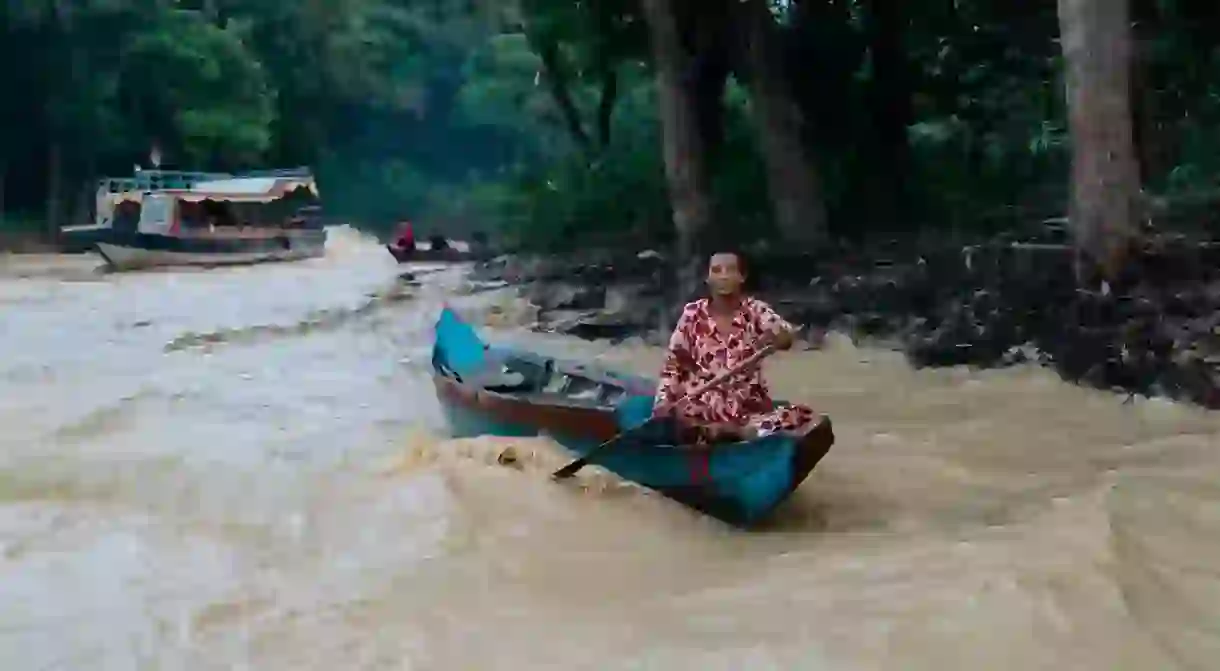On The Water's Edge: Cambodia's Ethnic Vietnamese Floating Village

A series of floating villages dot the huge expanse of water that makes up Cambodia’s Tonle Sap Lake. Here, the communities – predominantly ethnic Vietnamese – live out their lives on the water.
However, their livelihoods and future remain at threat, thanks to a series of issues. Take a look at how these communities are living on the water’s edge at one village, Kampong Phluk.
Village life
Welcome to Kampong Phluk, a community that heavily relies on the Tonle Sap’s waters for survival. As one of many floating villages that dot the edge of the huge lake, Kampong Phluk, which sits close to Siem Reap and is home to about 5,000 residents, is one of many floating villages that are turning to tourism to make ends meet.
Comprised of mainly fishing families, the villagers live on the rim of the lake in wooden stilted houses. During monsoon season – May to October, when 75% of Cambodia’s rain falls and the Tonle Sap Lake water rises by up to 10 metres – their houses seemingly float on the water.




Slender wooden boats are the only way for the villagers to get around, sailing from their homes that sit on the water, to floating schools, temples, shops and community halls.


Throughout dry season, residents return back to earth and live out their lives on ground level. During this time, families huddle in the shaded space beneath their homes to prepare meals, women gossip among themselves as they fix fishing nets or prepare mats of salted fish to dry under the sun, and children cycle through the streets shrieking with excitement as they go or play games in front of their homes.






Tonle Sap Lake
While life is seemingly simple at first glance, survival is tough for these communities who rely on the expanse of water daily. Declared a UNESCO biosphere reserve in 1997, the Tonle Sap Lake is home to approximately 150 species of fish and yields about 300,000 tons of fish, making it one of the world’s most productive freshwater ecosystems.
According to NGO Conservation International, which carries out work to improve the lives of these communities, the Tonle Sap and Cambodia’s inland fisheries account for more than two-thirds of Cambodia’s protein consumption, and are worth an estimated $2 billion annually.


However, fish populations are drastically dipping due to over-fishing and environmental issues, such as the slashing of mangroves that protect small fish, climate change and threats posed by the construction of a series of dams along the Mekong River, which merges with the Tonle Sap in Phnom Penh. In 2016, Global Nature Fund announced the Tonle Sap is the “most threatened” lake in the world.
Fish provide the country’s diet with the main source of protein, and it is Cambodians’ appetite for the species that in effect feeds the floating villages’ fishing-based economy. But with depleted fish stocks, this is having a serious impact on lives.




Tourism trend
Kampong Pluk and other floating communities in the area, including Kampong Khleang and Chong Kneas, are benefitting from the rising number of tourists that are steadily flocking to the sites. Many now drive the boats that take tourists through the villages and onto the lake, or run small floating restaurants to feed the crowds.


Some families have even opened up their homes to guests. For example, at Kampong Luong there are a handful of basic homestays with local families that can be booked on arrival at the boat landing.
While life remains tough for this pocket of people, hopes are high that eco-tourism has thrown them a lifeline to diversify and thrive. As with any eco-tourism trip, visitors are urged to remain respectful during their stay.


















